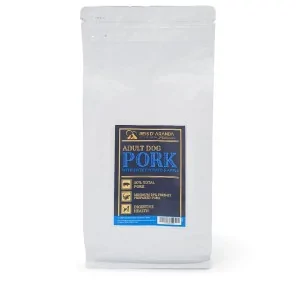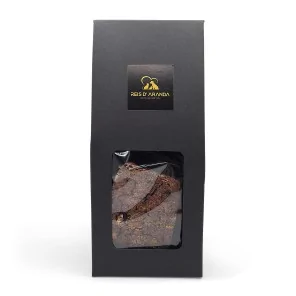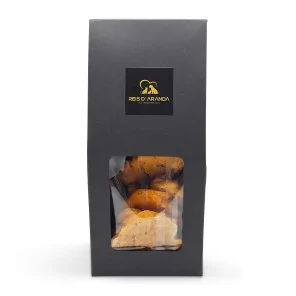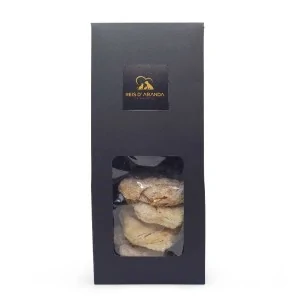The Tornjak originated from genetically homogeneous, almost extinct, indigenous shepherd dogs. These dogs have...
THE PUG
INTRODUCTION
The pug is a very particular dog. If one had to define it in two words, one would have to say that it is a bonsai mastiff. And the ‘official’ motto of the breed, multum in parvo (Latin: much in little - much substance in small space), certainly alludes to a big dog in a small body.
THE ORIGIN OF THE PUG
There is some conjecture as to the origin of this breed which seems to have come from the East. Its country of origin is listed as China, where snub-nosed dogs were privileged. It found its way to Europe with the merchants of the Dutch East India Company and by 1500 was admired in the Netherlands. In fact, the Pug became the symbol of patriotic royalty.
The Pug came to England when William III took the throne. Until 1877, the breed was only seen in fawn but in that year a black pair was introduced from the East.
THE PUG STANDARD
GENERAL APPEARANCE: Undoubtedly a square, plump dog, ‘multum in parvo’ (much substance in small space) which shows in his compact build, well constructed proportions and hardness of muscle but should never appear short-limbed, lean or ‘patilargo’.
IMPORTANT PROPORTIONS: Definitely square and compact.
HEAD: Relatively large and in proportion to the body, round, not apple-shaped.
CRANIAL REGION
SKULL: Without indentation. The wrinkles on the forehead should be clearly defined without exaggeration.
FACIAL REGION
TRUFFLE : Black with fairly large and well opened nostrils.
Narrow nostrils and heavy folds over the nose are unacceptable and should be severely penalised.
HOCIO : Relatively short, obtuse, square, not curved upwards. Eyes and nose should never be adversely affected or hidden by excessive folds over the nose.
Jaws/Teeth : Slightly undershot. The lower jaw is broad with incisors set almost in a straight line. Crooked muzzle and showing teeth and tongue is highly undesirable and should be severely penalised.
EYES: Dark, relatively large, round, with sweet and concerned expression, very bright, and when excited full of ardor. Never bulging, exaggerated or showing white when looking forward. Free from eye problems.
EARS: Thin, small and soft like black velvet. There are two types: ‘Rose ear’, which is a small pendant ear which folds back to show the ear canal. ‘Button ear’, which is an ear that folds forward, the tip attaches to the skull to cover the opening. The latter are preferred.
preferred.
NECK: Slightly arched resembling a crest, strong, thick, with sufficient length to carry the head proudly.
BODY: Short and compact.
TOP LINE: Level; neither concave nor sloping.
CHEST: Broad. Ribs well sprung back.
TAIL: Set on high, tightly curled over the hips. Double curl highly desirable.
LIMBS
FOREQUARTERS
Shoulders: Well laid back.
FOREARMS: Extremities very strong, straight, of moderate length and set well under the body.
HANDS: Neither as long as a hare's foot nor as round as a cat's foot; toes wide apart; nails should be black.
HIND LIMBS
GENERAL APPEARANCE: Limbs very strong, of moderate length, well under the body, straight and parallel when viewed from behind.
KNEE: Good angulation of the femoro-tibial- patella (knee) joints.
FEET: Neither as long as a hare's foot nor as round as a cat's foot; toes wide apart; nails should be black in colour.
GAIT / MOVEMENT: Seen from the front, the forelegs should be lifted and let fall well under the shoulders, keeping the feet straight forward, without turning in or out. From behind, the action should be equally correct. The forelegs are used with strength by bringing them well forward and the hindquarters moving freely and bending well at the knees. A slight swinging of the hindquarters characterises the gait. Able to make a determined and confident movement.
COAT
HAIR: Fine textured, smooth, soft, short and glossy. Neither harsh nor woolly.
COLOUR: Silver, apricot, light fawn or black. Each of these colours must be clearly defined to emphasise the contrast between the colour, the striation (a black line extending from the occiput to the tail) and the mask. The markings must be well defined. The muzzle or mask, the ears, the spots on the cheeks, the thumb mark or the lozenge on the forehead and the striation should be as black as possible.
SIZE AND WEIGHT: The ideal weight is between 6.3 and 8.1 kg. Must be strongly muscled, but the substance must not be mistaken for overweight.
FAULTS: Any departure from the foregoing points should be considered a fault and the seriousness with which the fault should be regarded should be in exact proportion to its degree and its effect upon the health and welfare of the dog.
DISQUALIFYING FAULTS
- Aggressive or fearful dog.
- Any dog showing clear signs of physical or behavioural abnormalities shall be disqualified.
NOTE: Male dogs should have two apparently normal appearing testicles fully descended into the scrotum.
PUG HEALTH
- NECROTIZING MENINGOENCEPHALITIS (NME) OR PUPPY ENCEPHALITIS (PDE): A fatal disease in which the brain becomes inflamed with extensive necrosis. It usually affects young animals but can also occur in older animals.
Symptoms include seizures, circular movements, ataxia, personality changes, blindness and coma, and can occur over a period of weeks or even days in severe cases.
Treatment for the disease is merely palliative and there is no way to diagnose it. However, it is possible to determine the risk of suffering from it by means of a genetic susceptibility test.
- DEGENERATIVE MYELOPATHY (MD): A late onset genetic neurodegenerative disease affecting the spinal cord. The myelin progressively degenerates without causing any pain.
Symptoms include coordination problems and subsequent paralysis starting in the back of the dog and eventually affecting the whole body. It has been noted, however, that there is a variant unique to the pug that only affects the rear of the dog.
Unfortunately, to date, there is no cure for this disease and treatment consists of the combined use of physiotherapy to maintain mobility for as long as possible, together with other palliative techniques to provide an optimal quality of life.
Myelopathy is apparently caused by a genetic mutation that can be tested for with a simple test.
- HEMIVERTEBRA (HV): This is a congenital malformation of the spine in which one or more vertebrae develop with an unusual wedge shape, thus preventing correct alignment with the rest. This anomaly results in deformity and instability of the spine causing pain, ataxia, loss of hind leg mobility and incontinence. Clinical signs usually appear before the age of one year and diagnosis is radiographic.
Depending on the degree of deformity, surgical intervention is possible but not always successful.
- BRACHYCEPHALUS DOG SYNDROME: This is one of the most common pug problems. Brachycephalic dog syndrome affects all variants of dog breeds that have a flat muzzle. Sufferers have difficulty breathing normally from birth and it can cause real health problems. To control this we have the BOAS test, which is essential for breeding.
The pug is a breed with a tendency to put on weight, so it is better to opt for low fat or white meat feed and to exercise regularly, in this way we will be able to prevent many health problems.
WHAT IS THE PUG LIKE AS A PET?
The pug's temperament is typical of a pet dog. It is affectionate, happy and playful. It has a strong personality and likes to attract attention, but is stable in character.
These dogs are easy to socialise and, properly socialised, tend to get along well with adults, children, other dogs and other animals. However, although playful, they do not cope well with intense play and the antics of small children. Of course, in order for them to get along well with strangers and other pets, it is important to socialise them from puppyhood.
In general, these dogs do not have behavioural problems, but they can develop separation anxiety quite easily. Pugs need constant companionship and can become destructive dogs when left alone for long periods of time. They also need exercise and mental stimulation to keep them from becoming bored.
They make excellent pets for most people and families with large children, and even for novice owners. However, this breed is not recommended for families with very young children, as they tend to unintentionally mistreat small dogs. They are also not good pets for people who spend most of the day outside and for very active people.
CONCLUSION
This breed of dog needs constant companionship as they are very playful and if left alone, can develop separation anxiety. That is why it is not recommended for families with very young children, as they could not be given the amount of attention they deserve. But with slightly older children, there is no problem with pugs, quite the contrary, because they are very affectionate and sociable little animals.
Leave a comment
Log in to post comments
















